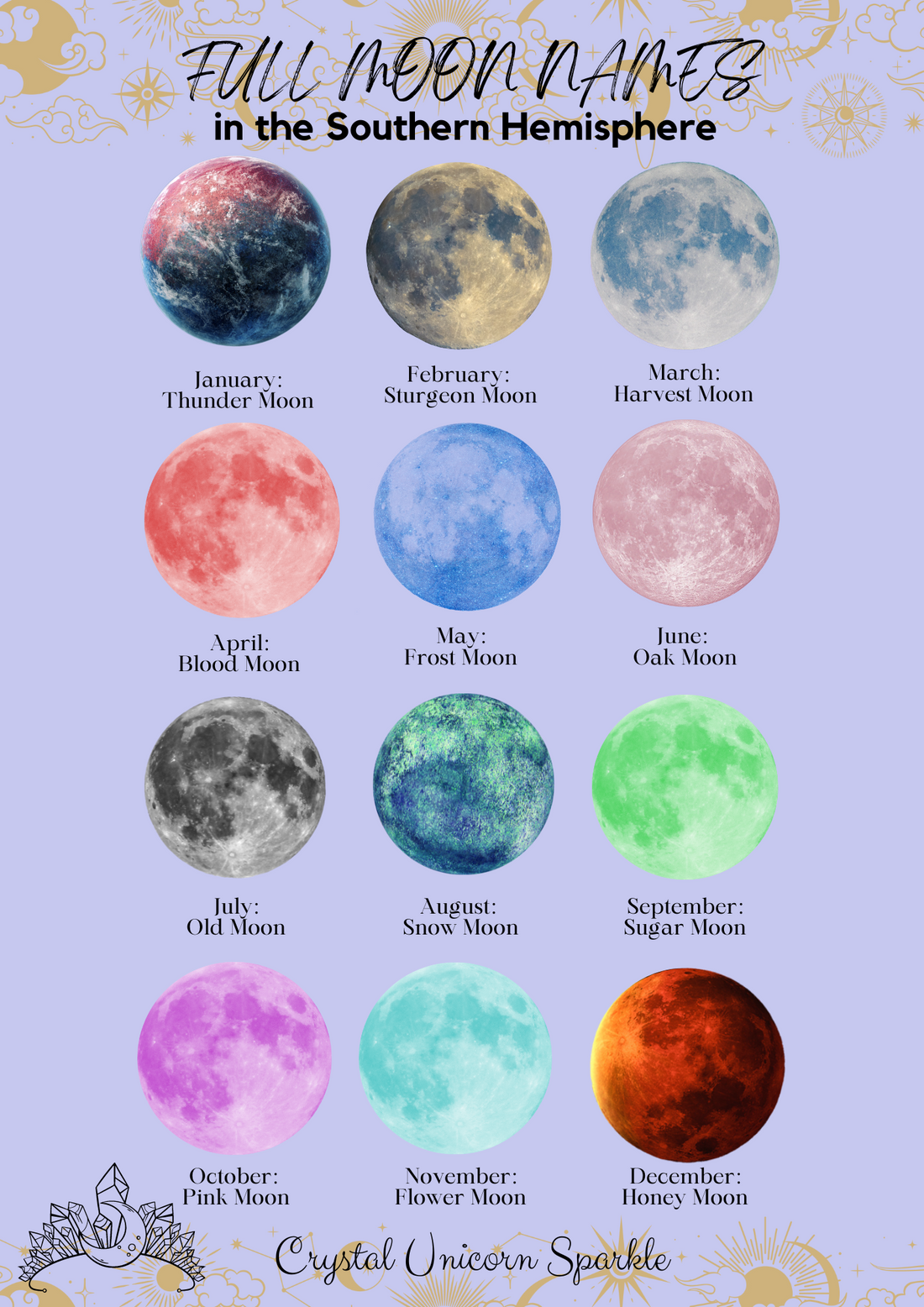Southern Hemisphere Moon Names
The Southern Hemisphere shares many of the same lunar names as the Northern Hemisphere, but they may appear in different seasons due to the reversal of seasons between the two hemispheres. However, there are some cultural differences in lunar naming practices across different regions and indigenous cultures in the Southern Hemisphere. Here are a few examples:
-
January: Hay Moon/ Thunder Moon - This moon name is derived from the hay harvest season in the Southern Hemisphere.
-
February: Grain Moon/ Sturgeon Moon- Signifying the ripening of grains in preparation for harvest.
-
March: Harvest Moon - Associated with the autumn harvest in the Southern Hemisphere.
-
April: Hunter's Moon/ Blood Moon - Named for the time when Indigenous peoples in the Southern Hemisphere traditionally hunted to store food for the winter.
-
May: Frost Moon - Reflecting the colder temperatures as winter approaches.
-
June: Oak Moon - Referring to the time when oak trees shed their leaves in the Southern Hemisphere.
-
July: Cold Moon/ Old Moon - Signifying the peak of winter coldness in the Southern Hemisphere.
-
August: Snow Moon - Named for the potential snowfall in some regions of the Southern Hemisphere during this time.
-
September: Worm Moon/ Sugar Moon - Indicating the time when earthworms become active again after winter in the Southern Hemisphere.
-
October: Pink Moon - Associated with the blooming of pink flowers, such as cherry blossoms, in some Southern Hemisphere regions.
-
November: Flower Moon - Reflecting the abundance of flowers in bloom as spring progresses in the Southern Hemisphere.
-
December: Strawberry Moon/ Honey Moon - Named for the time when wild strawberries ripen in certain Southern Hemisphere regions.
Southern Hemisphere Moon Names

